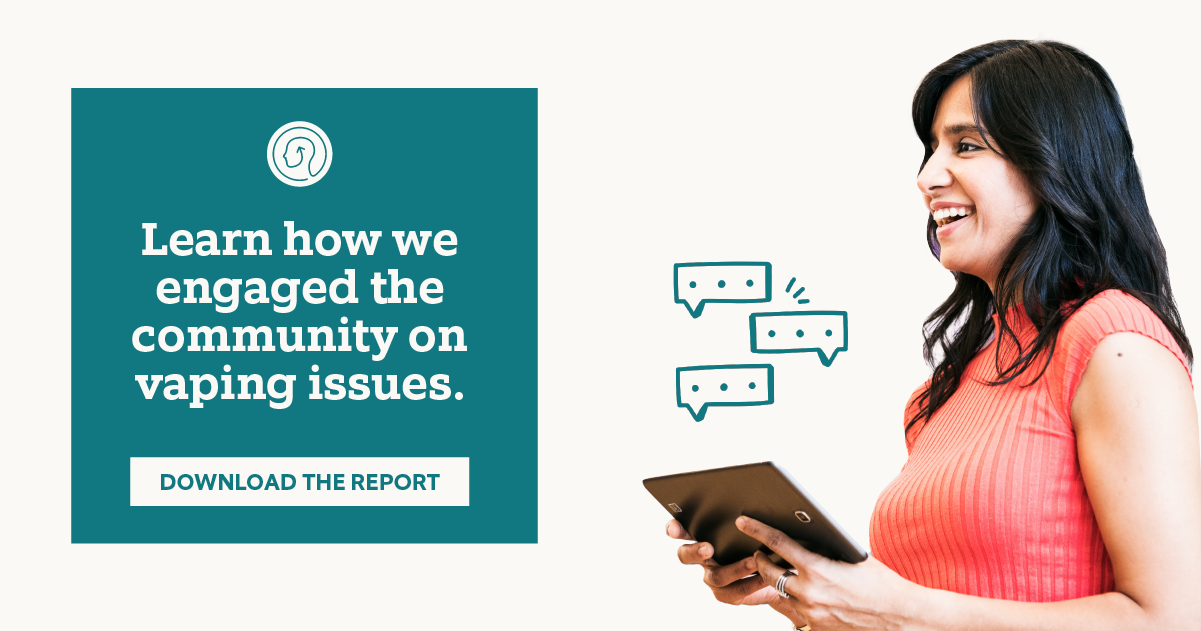Engaging Communities: The Power of Inclusive Community Research
Within the field of public health, researchers often work to address complex community-level issues. Each community's ever-changing environment requires on-the-ground knowledge of social dynamics and systems to create effective programs or behavior change.
But how do you engage with a community authentically?
One of the foundational components of authentic community engagement requires that those in power share power and include individuals and local organizations as fellow experts and decision-makers.
Community research is invaluable and leads to more robust and accurate input, greater impact, and more sustained programs and initiatives for both non-profits and government agencies. Clients rely on our team to facilitate these conversations. It’s our role to relay the community's voice to program facilitators and ensure that voice is represented.
Engaging the community allows researchers to build trust with local members and leaders, gain a deeper understanding of the socioeconomic factors impacting the issue, and identify what has previously worked or not worked for that community. When solutions are rooted in the community itself, they are more context-specific and sensitive to the community's beliefs and needs.
How do we engage with the community to achieve quality outcomes?
There are many effective strategies for community-engaged research. How to engage often depends on the topic and the target community. For example, in a recent teen vaping study, we intentionally built a method that included speaking with teens and adults separately. How a moderator or researcher speaks with a teen will be different from how they speak with an adult, and each group has a different role in the system around teen vaping.
Community-engaged research is conducted through methods like structured community conversations, which provide an opportunity for diverse stakeholders to openly share their experiences, perspectives and needs around an issue. This dialogue generates rich insights to inform potential solutions that are embraced by the community.
Meaningful engagement for quality outcomes
Meaningful community engagement can take shape in a variety of ways and requires time and flexibility. Building trusting relationships with people—and finding a variety of ways to enable their connection to a project, a process, or a group of people—requires sustained effort.
Developing community impact programs without community representation poses a greater risk than investing time in building foundational relationships. We’ve seen successful and intentional community engagement efforts shape and improve a variety of work, from developing communication campaigns around public health issues such as smoking and vaccination to informing content curation for large conferences for various sectors. With authentic engagement, programs can be built to impact the people who need it most.

